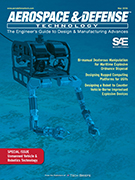Standard
Pilot Training Recommendations for Unmanned Aircraft Systems (UAS) Civil Operations
2016-04-03
CURRENT
ARP5707
The topics identified could be used for the construction of a PTS for UAS commercial pilot operations and a PTS for a UAS pilot instrument rating. The UAS commercial pilot rating would contain restrictions on the types of operations that could be flown that would be dependent on the type of UAS used. ...The UAS commercial pilot rating would contain restrictions on the types of operations that could be flown that would be dependent on the type of UAS used. The UAS type would also influence the specific training topics that would be covered. ...Consequently, the scope of this document is limited to proposing an initial framework to train and certify UAS pilots for fixed wing UAS. As the community grows, certification and training requirements will become more detailed and refined.











